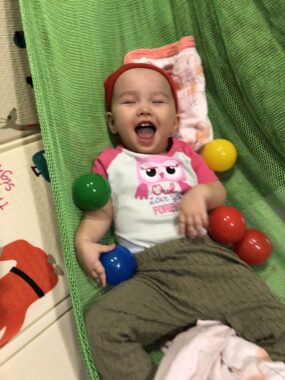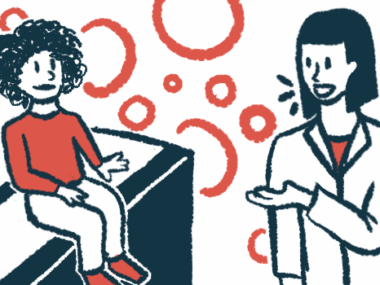How we prepared our child with AADC deficiency for gene therapy
Play, movement, and learning helped accelerate Rylae-Ann's progress
Written by |

For many children with aromatic l-amino acid decarboxylase (AADC) deficiency, gene therapy holds opportunities for the future. It’s a chance for them to move, speak, and experience life in ways that once seemed impossible. I have often written about the life-changing benefits of gene therapy. Yet, the unfortunate truth remains that some children still haven’t received it.
When our daughter, Rylae-Ann, was diagnosed with AADC deficiency, there was no approved therapy, no clear road map, and little guidance on how to care for a child with such a rare disease. Today, nearly seven years after her gene therapy, my wife, Judy, and I can look back and see that the work we did before treatment was just as important as the work we do now.
Judy and I refused to let our daughter lie down and wait for time to pass. The reality was harsh. Children with AADC deficiency face a limited life expectancy and severe disabilities, but we could not accept that as Rylae-Ann’s fate. Instead, we relied on our intuition, our experience as educators, and what we could learn from similar conditions, and built our own approach centered on stimulation, learning, and love.
The following is the core of what guided us in those early years.

Rylae-Ann enjoys lying in a hammock as she plays with a set of colorful balls. (Photo by Richard E. Poulin III)
Play-based learning
Even when Rylae-Ann showed no outward response, Judy and I continued to play with her every day. Play is a child’s natural language, and we believed it was essential to offer her experiences that encouraged curiosity and connection. We used toys with bright colors and gentle sounds, simple games that involved touch, and lots of laughter. Even if she showed no reaction, we trusted that her mind and senses were absorbing it all.
Exposure to learning
We surrounded Rylae-Ann with language and stories. We read books aloud, sang songs, and described everything we were doing — from cooking breakfast to walking outside. As educators, we knew that exposure builds a foundation for understanding, even before comprehension is visible. We adapted lessons and used picture books, flash cards, and simple objects to integrate learning into her environment.
Movement
Movement was one of the hardest areas because Rylae-Ann’s body could not yet keep up with what her mind wanted. Judy and I practiced basic motor patterns such as sitting, crawling, and standing again and again. Sometimes, we used our hands to guide her limbs, like a puppeteer. Other times, we used props and exercises inspired by physical therapy. The goal was not immediate success. It was to help her brain form the connections to understand how movement should feel.
Sensory stimulation
Sensory activities were critical things Judy and I did. We let Rylae-Ann feel water running over her hands, play in grass and sand, and touch a variety of textures. We used lights, music, and sounds to stimulate her senses. We did not realize it then, but this was laying the groundwork for her future therapy. When she later began intensive physical and occupational therapy, her sensory processing issues were significant challenges, but the early sensory exposure helped her adapt more quickly.
The hidden progress
For a long time, Judy and I didn’t see any changes. It was easy to question if what we were doing mattered. But progress was happening, even if it wasn’t yet obvious. When Rylae-Ann received gene therapy, the foundation we had built made an enormous difference. She was ready. Her body and brain had been introduced to movement, play, and learning long before treatment began. Once the therapy took effect, she was able to progress much faster than expected.
Today, as we look back, we realize that every small effort mattered. Every song, every touch, every movement was part of a bigger picture. For families still waiting for treatment, know this: What you do now is making a difference. You are preparing your child for a brighter future.
Note: AADC News is strictly a news and information website about the disease. It does not provide medical advice, diagnosis, or treatment. This content is not intended to be a substitute for professional medical advice, diagnosis, or treatment. Always seek the advice of your physician or other qualified health provider with any questions you may have regarding a medical condition. Never disregard professional medical advice or delay in seeking it because of something you have read on this website. The opinions expressed in this column are not those of AADC News or its parent company, Bionews, and are intended to spark discussion about issues pertaining to aromatic l-amino acid decarboxylase deficiency.






Leave a comment
Fill in the required fields to post. Your email address will not be published.